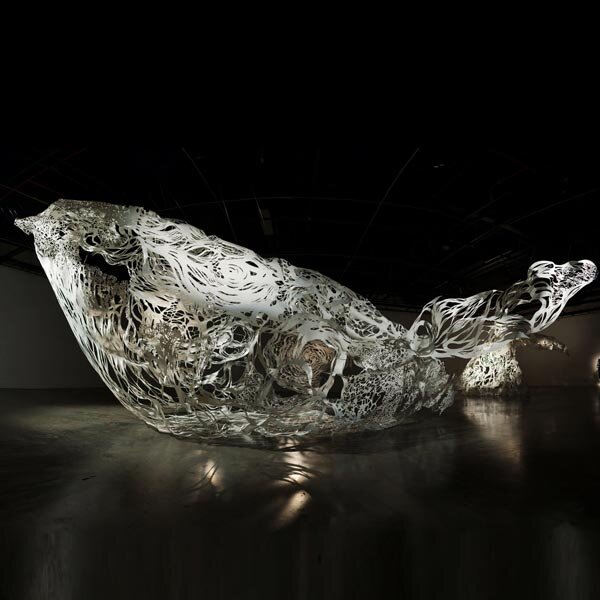How Takashi Amano Takes Nature Photography to New Depths
by Lucy Dayman | ART
© Takashi Amano, Aquarium Landscape
To really understand how the genre of nature photography has been shaped here in Japan, there’s one name you need to know: Takashi Amano. Born in 1954, Amano lived various lives. Not only was he a professional track cyclist, but also an accomplished photographer and aquarium designer. Combining the last two skills, he created some of the most unique landscape photography and aquarium aquascapes in the world.
Merging his knowledge of landscape photography with aquarium design, he gave birth to his own unique style. In these projects Amano’s carefully crafted aquarium landscapes became not only works of physical art themselves but also his subjects for landscape photography. Reflecting on some of his most iconic images, let’s trace the breath-taking beauty of Amano’s work.
Landscape Photography by Takashi Amano
© Takashi Amano, A Ray of Light from the Dark Clouds, 2012
In order to be able to replicate what happens in the natural world for his aquatic landscapes, Amano travelled extensively, collecting images as he went. This photograph was taken in the Norwegian fjords. Fenced off by neighboring glaciers, this photo encapsulated the way in which nature almost mimics architectural design. When it comes to landscaping taking these architectural elements found in a natural context is vital to the structure of a landscape.
© Takashi Amano, Golden Morning, 2012
Taken in his hometown of Niigata, this photograph entitled ‘The Golden Morning’ was taken in February, when Japan’s winter sky is clear, allowing the fog hovering above the lake to capture the sun’s rays perfectly. The coldness of the reality of this setting is challenged by the warm golden glow of the morning sun. The conflicting elements of nature are something seen in Amano’s aquascapes. What looks like a lush rainforest is really an underwater garden.
© Takashi Amano, Spring Dawn, 2013
Using color once again to shape the energy of the image, this photograph was also taken in Takashi’s birthplace, Niigata, nearby Mount Yahiko. Looking over the plains, this pocket of Niigata has been almost stained by the purple and pink hues of the emerging sun. Fleeting in its beauty, and perfect in its transience, this is an example of the wabi-sabi ideology in action.
© Takashi Amano, Amazon Landscape
Taken from his Amazon Landscape Photography series, this photo was captured on his journey between the city of Manaus in the lower Negro, all the way up to the Brazil-Venezuela-Columbia border. Like the fleeting passing of the morning light, pockets of the Amazon Rainforest are disappearing thanks to logging and development. This is why Amano felt the need to record the area’s last basins before they are taken away.
For nature-photography lovers, you should also take a look at the work of another Takashi: Takashi Tomo-oka:
Japanese Landscape Inspiration
© Takashi Amano, Yakushima
Situated in Southern Japan lies Yakushima, an island which resembles something that lives within an Amano aquarium landscape. It is also a certified UNESCO natural world heritage site. Thanks to its highly elevated position and warm tropical climate, this mossy landscape has an atmosphere all of its own. Dense and lush it’s almost like the physical encapsulation of where Amano’s traditional style landscape photography and underwater landscaping collide.
© Takashi Amano, Sado Island
Positioned near the Sea of Japan, this subject, the island of Sado, is located right where area’s cold and warm currents meets, crafting an incredibly unique natural landscape where tropical and subarctic type vegetation live together harmoniously. It’s not easy to see whether this image is a painting, or whether it’s underwater or on a mountaintop, but that particular enigmatic feeling is just what makes it so powerful.
What made Amano’s work so distinctive, yet familiar was his technique of combining traditional style Japanese gardening concepts into his work. The two main gardening ideologies he employed were Zen rock arrangement and the less commonly known wabi-sabi method.
Originating in Zen Buddhism, Zen gardens meticulously crafted miniature landscapes made to imitate the essence of nature rather then physically represent nature itself. Wabi-sabi is the focus on the qualities and acceptance of transience and imperfections. It’s also derived from Buddhist teachings, most specifically impermanence (known in Japanese as 無常 mujo).
For more spellbinding pictures inspired by the beauty of Japan, check out:
Takashi Amano Aquarium Landscapes
© Takashi Amano, Aquarium Landscape
This image is exactly where Amano’s love of landscape, naturally produced art and his professional training as an aquarist unite. While still pursuing his love of photography and design, in 1982 the multi-talented artist founded the aquarium company known as Aqua Design Amano. After carefully studying nature with his camera he tried his hand at recreating his own aquarium aquascapes from scratch to undeniable success.
Though he sadly passed away in 2015, Amano left behind a number of mentees, his own unique equipment so others can follow his techniques and a legacy that will continue to live on throughout photographic history.















ART | February 5, 2022